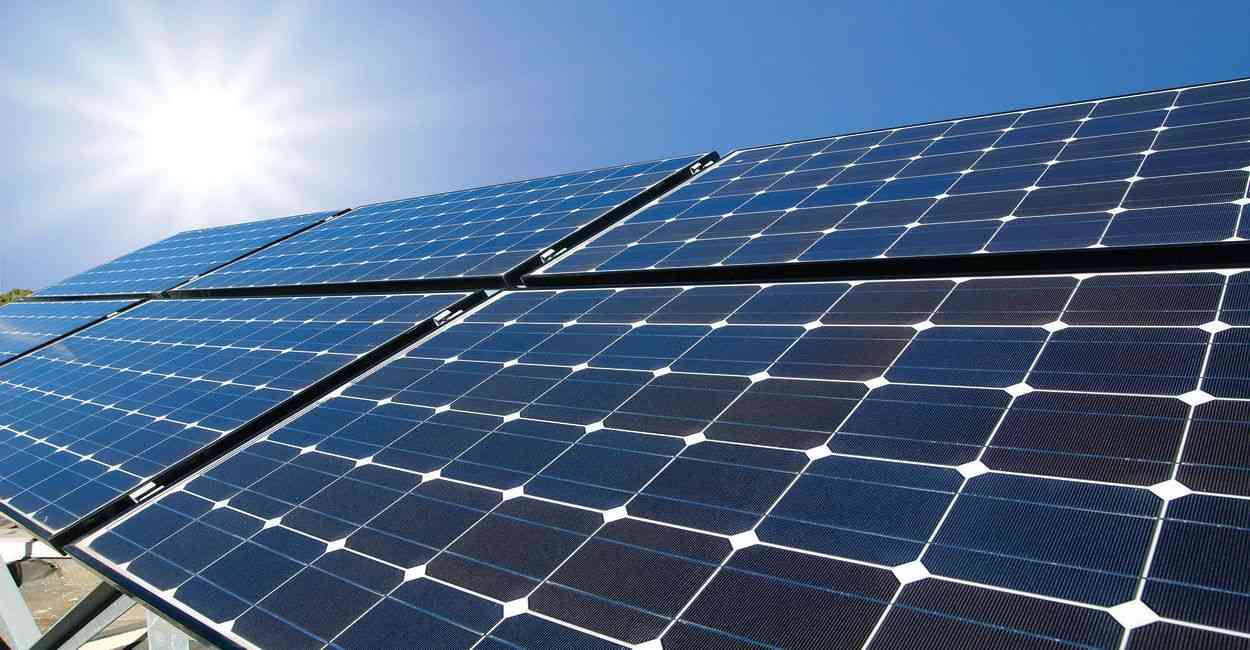The Future Of Solar Energy: Predictions For 2024 and Beyond

The future of solar energy looks bright, with continued growth and innovation expected in the industry. Here are some of the key trends and developments that are likely to shape the future of solar energy:
Increasing adoption: The use of solar energy is expected to continue to grow rapidly, with many countries setting ambitious targets for the deployment of solar power. As the price of solar technology continues to fall and the environmental benefits of solar energy become more widely recognized, it is likely that more and more individuals and businesses will turn to solar as a source of electricity.
Innovations in technology: The solar industry is constantly innovating, with new technologies being developed all the time. Some of the most promising developments in solar technology include the use of nanomaterials to increase the efficiency of solar cells, the development of transparent solar panels that can be integrated into windows and other building materials, and the use of artificial intelligence to optimize the performance of solar systems.
Growing role in the transportation sector: Solar energy is also expected to play an increasingly important role in the transportation sector, with the development of solar-powered vehicles and the use of solar panels for electric power vehicles.
Increased storage capacity: One of the main challenges of solar energy is the fact that it is an intermittent source of electricity, with production varying depending on the time of day and weather conditions. However, the development of new technologies, such as solar thermal storage and advanced batteries, is helping to overcome this challenge by allowing excess solar energy to be stored and used when needed.
Policy and regulatory support: Governments and policymakers around the world are increasingly recognizing the importance of solar energy and are taking steps to support its adoption. This includes providing financial incentives for the deployment of solar systems, setting renewable energy targets, and implementing policies to encourage the use of solar energy.
2023 Solar Energy Predictions
There are many factors that can influence the adoption and growth of solar energy, including technological advances, changes in government policies and incentives, and shifts in the cost of other forms of energy. It is difficult to make precise predictions about the future of solar energy, but it is generally expected to play an increasingly important role in the global energy mix in the coming years.
There are a number of trends that suggest solar energy will continue to grow in the coming years. For example, the cost of solar photovoltaic (PV) panels has been falling rapidly in recent years, making it an increasingly cost-competitive form of energy. Additionally, advances in technology have made it possible to produce solar panels with higher efficiency, meaning they are able to generate more electricity from the same amount of sunlight.
There are also a number of initiatives and programs in place at the national and international levels that are designed to promote the adoption of solar energy. For example, many countries have established renewable energy targets, and some have implemented policies such as feed-in tariffs or renewable portfolio standards to encourage the use of solar energy.
Overall, it seems likely that solar energy will continue to grow in the coming years, driven by technological advances, declining costs, and supportive policies and programs. However, the exact rate of growth will depend on a variety of factors and is difficult to predict with certainty.
Solar Energy Industry Trends For 2023
There are several trends that are currently shaping the solar energy industry:
- The declining cost of solar photovoltaic (PV) panels: In recent years, the cost of solar PV panels has fallen significantly, making solar energy more cost-competitive with other forms of energy. This trend is expected to continue as technology improves and economies of scale are achieved.
- The increasing efficiency of solar panels: Solar panels are becoming more efficient at converting sunlight into electricity. This means that the same size panel is able to generate more electricity, which can reduce the overall cost of a solar energy system.
- The growth of utility-scale solar projects: There has been a trend towards the development of large-scale solar projects, such as solar farms, which are able to generate significant amounts of electricity. These projects are often developed by utility companies and are connected to the grid.
- The increasing adoption of solar energy by businesses and institutions: Many businesses and institutions are turning to solar energy as a way to reduce their energy costs and their carbon footprint.
- The growth of the rooftop solar market: The rooftop solar market, which includes the installation of solar panels on the roofs of homes and other buildings, has also been growing in recent years. This trend is expected to continue as more people become aware of the benefits of solar energy and as the cost of installation continues to decline.
- The rise of solar energy storage: As the use of solar energy increases, there is also a growing need for efficient and cost-effective ways to store the excess energy generated by solar panels. This trend is expected to continue as the technology for energy storage improves and becomes more widely available.
Solar Energy Advancements In 2023
There have been a number of significant advancements in the field of solar energy in recent years. Some of the most notable include:
- The development of more efficient solar panels: Solar panels are able to convert sunlight into electricity with greater efficiency today than in the past. This means that the same size panel is able to generate more electricity, which can reduce the overall cost of a solar energy system.
- The use of new materials in solar panels: Researchers are exploring the use of new materials, such as perovskites, in solar panels to improve their efficiency and reduce their costs.
- The growth of utility-scale solar projects: There has been a trend towards the development of large-scale solar projects, such as solar farms, which are able to generate significant amounts of electricity. These projects are often developed by utility companies and are connected to the grid.
- The increasing adoption of solar energy by businesses and institutions: Many businesses and institutions are turning to solar energy as a way to reduce their energy costs and their carbon footprint.
- The growth of the rooftop solar market: The rooftop solar market, which includes the installation of solar panels on the roofs of homes and other buildings, has also been growing in recent years. This trend is expected to continue as more people become aware of the benefits of solar energy and as the cost of installation continues to decline.
- The rise of solar energy storage: As the use of solar energy increases, there is also a growing need for efficient and cost-effective ways to store the excess energy generated by solar panels. This trend is expected to continue as the technology for energy storage improves and becomes more widely available.

Solar Energy Innovations For 2023 And Beyond
There have been a number of innovative developments in the field of solar energy in recent years. Some examples include:
- Solar panels that can be integrated into building materials: Researchers are developing solar panels that can be integrated into building materials such as roof tiles, windows, and walls. This can make it possible to generate electricity from the sun without the need for traditional, standalone solar panels.
- Solar-powered roads: There have been a number of efforts to develop roads that are able to generate electricity from the sun. These "solar roads" use solar panels that are integrated into the surface of the road to generate electricity, which can be used to power streetlights, traffic signals, and other infrastructure.
- Solar-powered water treatment plants: Solar energy is being used to power water treatment plants in some areas, which can help to reduce the amount of energy needed to purify water and also reduce greenhouse gas emissions.
- Solar-powered charging stations: Solar-powered charging stations for electric vehicles are becoming more common, making it possible to charge vehicles using clean, renewable energy.
- Solar-powered drones: Some companies are using drones powered by solar panels for tasks such as monitoring crops, surveying land, and delivering packages. This can reduce the need for fossil fuels and make it possible to carry out these tasks in a more sustainable way.
Solar Energy Predictions For The Next 10 Years
Solar energy is a rapidly growing industry, and its use is expected to continue to increase in the coming years. Some predictions for the future of solar energy include the following:
- The price of solar panels will continue to fall, making it more affordable for individuals and businesses to install solar systems.
- Solar power will become an increasingly important source of electricity, particularly in developing countries where it can help to reduce reliance on fossil fuels and improve access to electricity.
- The use of solar energy will continue to grow in the transportation sector with the development of solar-powered vehicles and the use of solar panels for electric power vehicles.
- The use of solar energy will become more widespread in buildings with the development of new technologies, such as solar shingles and transparent solar panels that can be integrated into windows and other building materials.
- The use of solar energy will continue to expand in the industrial sector with the development of new technologies such as solar steam generation and solar thermal storage.
Overall, it is likely that solar energy will play an increasingly important role in the global energy mix in the coming years as efforts to reduce reliance on fossil fuels and combat climate change accelerate.

Solar Energy In The Next Decade
It is difficult to predict exactly how solar energy will evolve over the next decade, as it will depend on a variety of factors such as technological advancements, economic trends, and policy decisions. However, it is likely that solar energy will continue to grow in importance and become an increasingly significant part of the global energy mix. Some specific trends and developments that are expected to shape the future of solar energy over the next decade include:
- Continued cost reductions: Solar technology has become significantly cheaper in recent years, and it is expected that this trend will continue over the next decade. As the price of solar panels and other solar technology continues to fall, it will become more affordable for individuals and businesses to install solar systems, leading to further growth in the industry.
- Increasing adoption in developing countries: Solar energy is expected to play a particularly important role in developing countries, where it can help to improve access to electricity and reduce reliance on fossil fuels. The International Energy Agency (IEA) has predicted that solar energy will be the main source of new electricity generation in developing countries over the next decade.
- Growing role in the transportation sector: Solar energy is also expected to play an increasingly important role in the transportation sector over the next decade, with the development of solar-powered vehicles and the use of solar panels to power electric vehicles.
- Continued innovation in technology: The solar industry is constantly innovating, and over the next decade it is likely that new technologies will be developed that further improve the efficiency and cost-effectiveness of solar systems.
- Increasing policy and regulatory support: Governments and policymakers around the world are expected to continue to support the adoption of solar energy through a variety of measures, including financial incentives and renewable energy targets.
Conclusion
The push to shift to renewable energy sources is becoming more obvious each year. The ultimate goal is to stop the dependency on fossil fuels and create a limitless and low-cost green energy supply.

